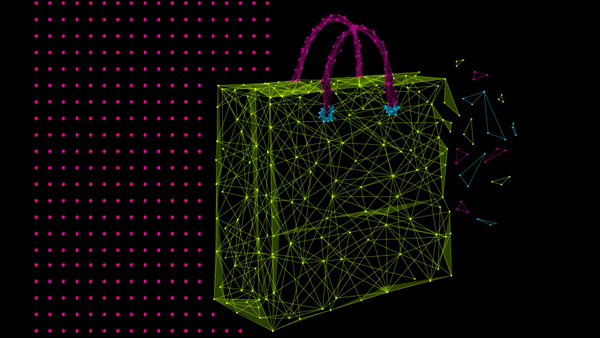With Amazon cornering the no-frills, just-get-me-the-product market, physical retailers are feeling pushed to establish their unique value proposition. While the e-commerce giant has taken advantage of digital tools to further its dominance in convenience and commodity, physical retailers can use the same to draw consumers away from their computers and enhance their shopping journey.
In-Store Experiences
NPD Group reports that 40 percent of holiday shoppers plan to give experiential gifts over physical products this year, further continuing the trend of valuing activities over merchandise. To adapt, Nissan elected to bring memorable experiences into its dealerships, tying in with the release of Star Wars: The Last Jedi on Dec. 15.
The project, called “See the Unseen,” brings starfighters, holograms and droids from the Star Wars movies into Nissan dealerships using augmented reality technology. In addition to featuring characters and images from the iconic franchise, “See the Unseen” ties into Nissan products, explaining several safety features in a more interesting and digestible format than a user’s manual or Joe Carsalesman.
Jeremy Tucker, president of marketing for Nissan North America, described the project as “retail theater,” and also highlighted the importance not only of standing out with interesting retail experiences, but messaging as well.
“While the competition is focused on Santa Claus and red bows this holiday season, we are filling our dealerships with stormtroopers,” he said.
Simulated Tangibility
According to a survey by RetailDive, shoppers overwhelmingly prefer physical retailers for the option to test out products before purchasing. For simple products like, say, scissors, such a pre-buy trial is simple enough. However, for furniture retailers like Ikea, testing how a piece of furniture might work in the home before paying is closer to stealing than an innocuous test-run.
To give consumers the option of testing out interior design outside of pre-established showrooms (without risking jail time), Ikea partnered with TakeLeap, a Dubai-based virtual reality developer. Setting up pop-up locations across the Middle East, the DIY furniture giant allowed customers to design their own spaces with virtual Ikea products and, most importantly, buy them on-site if something strikes their fancy.
After all, the second-most-popular response in RetailDive‘s survey was the ability to take product purchases home right away, more instant gratification than any online retailer could ever hope to provide.
Human Interaction Is Overrated
Despite what analysts at Goldman Sachs might claim, interaction with underpaid, overworked retail employees is not a primary driver for shoppers stopping in physical spaces. RetailDive‘s survey found that only seven percent of consumers value the ability to pose questions to store associates as a reason to go to physical retailers.
Target embraced this antisocial shopping trend this year, installing beacons in stores to help customers navigate its labyrinths of shelving.
The Bluetooth devices allow Target shoppers to find their own location and the locations of individual items through an app on their phone, rather than having to track down an associate to help them.
Target’s beacons smooth out one of the fundamental difficulties of physical retail shopping, given that no matter how clearly-marked aisles may be, a search bar will always be an easier way to find exactly what someone is looking for.
The National Retail Federation reported that seven million more people shopped only online than only in stores over Black Friday, a trend that is unlikely to shift in the near future.
In order to stay competitive, retail brands need to lean into the physicality of their store spaces and use technology to give consumers a compelling reason to make an appearance.

